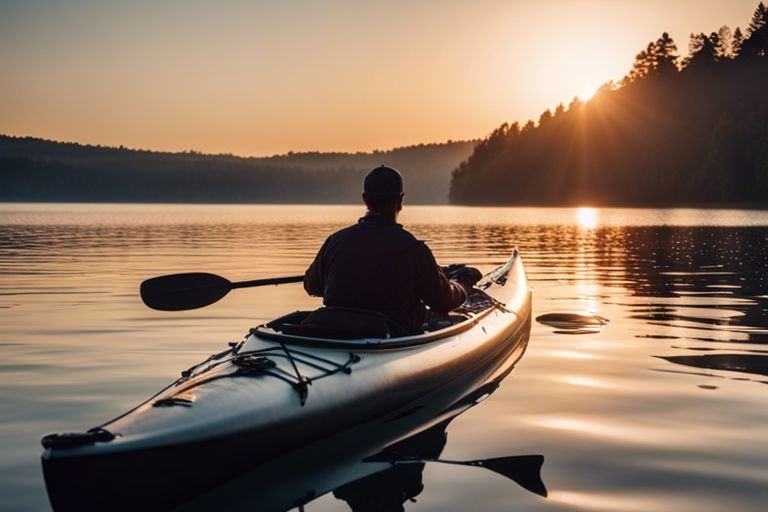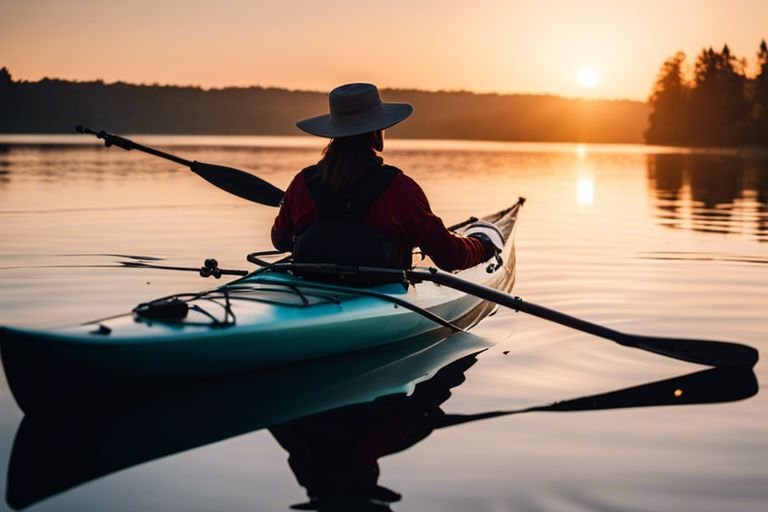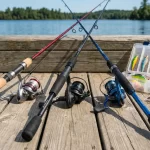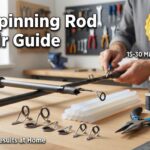Fishing, a tranquil and rewarding pastime, requires the right tools to navigate the waters with ease. In kayak fishing, a paddle is your trusted companion, propelling you towards your next catch.
This expert overview probes into the intricate world of fishing kayak paddles, shedding light on crucial aspects such as paddle length, blade materials, and feather angles.
Discover how the choice of paddle can elevate your kayaking experience, leading to smoother navigation and improved efficiency on the water.
Key Takeaways:
- A good paddle is imperative for efficient propulsion in kayak fishing: A high-quality paddle is necessary to navigate your fishing kayak effectively and efficiently. Choose a paddle that suits your style and preferences to enhance your kayaking experience.
- Consider paddle length and blade size for optimum performance: The length and size of your paddle can greatly impact your paddling efficiency and comfort. Make sure to choose a paddle size that matches your kayak and paddling style for better control and maneuverability on the water.
- Invest in a quality paddle to improve your fishing experience: While it may be tempting to opt for a cheaper paddle, investing in a high-quality paddle can make a significant difference in your kayaking experience. Look for durable materials, ergonomic designs, and adjustable features for maximum comfort and performance.
- Know your paddling style and blade preferences: Understanding your preferred paddling style (low, mid, high angles) and blade shape and size can help you choose the right paddle for your fishing kayak. Experiment with different blade materials and feather angles to find what works best for you on the water.
- Choose a paddle that suits your fishing kayak and personal preferences: With a wide variety of paddle options available, it’s important to select a paddle that complements your fishing kayak and aligns with your paddling preferences. Take the time to research and test different paddles to find the perfect fit for your kayaking adventures.
The Basics of Fishing Kayak Paddles
Your All You Need to Know to Choose a Kayak Paddle Guide is your key to unlocking the world of fishing kayak paddles.
Before you examine the details, let’s cover the basics of what exactly a fishing kayak paddle is and why it’s crucial for your kayaking adventures.
Definition and Purpose
With a fishing kayak paddle in hand, you have the power to propel your kayak through the water with ease, giving you the freedom to explore new fishing spots and reel in the big catches.
The paddle is your engine while kayaking, providing the necessary means of moving through the water efficiently. It’s not just a stick with blades – it’s your trusty companion on the water, guiding you towards your fishing goals.
Whether you prefer a low, mid, or high-angle paddling style, having the right fishing kayak paddle can make all the difference in your overall kayaking experience.
By choosing a paddle that suits your paddling style and kayak, you can enhance your efficiency and comfort on the water. With various paddle lengths, blade materials, and feather angles to consider, each aspect plays a crucial role in how well you navigate the waters while fishing.
Brief History of Fishing Kayak Paddles
On the quest for the perfect paddle, anglers have explored the evolution of fishing kayak paddles over time. Paddles have transitioned from traditional wooden designs to modern lightweight materials, offering a balance of durability and performance for today’s fishing enthusiasts.
As technology advances, so do the options for customizing your paddle to suit your individual preferences and needs.

Choosing the Right Paddle
Importance of Choosing the Right Paddle
One vital piece of equipment for successful kayak fishing is a paddle. Choosing the right paddle can greatly impact your kayaking experience, providing efficient propulsion and ensuring comfort while on the water.
An ill-fitting or poorly designed paddle can lead to fatigue, muscle strain, and decreased performance, affecting your ability to navigate smoothly through the water.
Investing in a quality paddle that suits your paddling style and kayak setup is crucial. Consider factors such as paddle length, blade materials, and feather angles to optimize your performance on the water.
A paddle tailored to your needs can enhance your fishing experience, allowing you to cover more ground with less effort.
Choosing the right paddle is not just about functionality; it’s about enjoying your time on the water. A well-designed paddle can make paddling more efficient and enjoyable, enabling you to focus on the thrill of fishing rather than struggling with an inadequate paddle.
Factors to Consider When Selecting a Paddle
Paddle length, blade materials, and feather angles play a crucial role in the performance of your kayak. When dicking out a paddle for kayak fishing, consider the following factors:
- Paddle Length: Choose a paddle length that suits your paddling style and kayak size.
- Blade Materials: Opt for lightweight and durable blade materials to reduce fatigue during long fishing trips.
- Feather Angles: Adjustable feather angles can enhance paddling efficiency and comfort based on your preference.
Though it may seem like a small detail, the right paddle can make a significant difference in your overall kayaking experience.
Common Mistakes to Avoid
Understanding the common mistakes to avoid when choosing a paddle is vital for a successful kayak fishing trip. Right paddle selection can prevent issues such as fatigue, discomfort, and reduced performance on the water.
For instance, using a paddle with the wrong length or blade shape can lead to inefficiency and frustration while paddling.
For instance, overlooking the importance of paddle design and materials can result in a subpar experience on the water.
By choosing a paddle that aligns with your needs and preferences, you can enhance your fishing adventures and make the most of your time on the water.
Paddles to Avoid for Fishing

Keep in mind that not all paddles are created equal when it comes to kayak fishing. Some types of paddles may not be ideal for your fishing adventures due to their limitations.
One type to steer clear of is inflatable paddles, as they often lack the durability and efficiency needed for extended periods on the water.
Inflatable Paddles: Why They’re Not Ideal
Paddles made of inflatable materials may seem convenient for storage and transport, but they typically lack the rigidity and responsiveness required for effective paddling, especially in challenging conditions.
Inflatable paddles can flex and bend, leading to decreased propulsion power and control, which are crucial for maneuvering a fishing kayak effectively.
Aluminum Paddles: Their Limitations
Another type of paddle to be cautious of is aluminum paddles. While aluminum paddles are lightweight and budget-friendly, they can be less efficient and comfortable than other materials.
Aluminum paddles may not provide the same level of performance and ergonomic benefits as paddles made from advanced materials like carbon fiber or fiberglass.
Plus, aluminum paddles can become cold to the touch in chilly weather, making them uncomfortable to use for extended periods.
Their limitations in terms of weight and performance may hinder your paddling experience, especially during long fishing trips where comfort and efficiency are necessary.
Paddles with Poor Ergonomics
Any paddle that lacks proper ergonomics should also be avoided for fishing purposes. Poorly designed paddles can lead to fatigue, discomfort, and decreased performance on the water.
It’s crucial to choose a paddle that feels comfortable in your hands and suits your paddling style to ensure an enjoyable fishing experience.
Optimal Paddle Length Discussion
Now, let’s explore the crucial aspect of choosing the right paddle length for your fishing kayak.
Measuring yourself for the correct paddle length is crucial to ensure optimal performance and comfort while out on the water.
Measuring Yourself for the Right Paddle Length
Discussion: When determining the ideal paddle length, stand the paddle upright, with the blade on the ground.
Measure from the ground to your nose – this measurement is a good starting point for selecting the right paddle length for you.
How Paddle Length Affects Performance
Length: The length of your paddle can heavily influence your kayaking performance.
A longer paddle requires more effort but offers better reach, while a shorter paddle can provide quicker strokes but may lead to fatigue more quickly.
Performance: Finding the right balance is key to optimal performance on the water. Ensure your paddle length allows for efficient strokes and minimal strain on your body, enhancing your overall kayaking experience.
Exceptions to the Rule
To: While general guidelines exist for determining paddle length, individual preferences, and paddling styles may necessitate exceptions.
Experimenting with different lengths can help you find the perfect fit for your fishing kayak adventures.
With: Keep in mind that personal comfort and efficiency should ultimately guide your choice of paddle length.
Don’t hesitate to try out various lengths to discover what works best for you and enhances your time on the water.
Paddle Styles and Techniques
All How to Choose Kayak Paddles are not created equal when it comes to fishing kayaks. Understanding the different paddle styles and techniques can greatly enhance your kayaking experience.
Whether you prefer a low-angle style, a mid-angle style, or a high-angle style, each has its own set of pros and cons to consider.
Low Angle Style: Pros and Cons
One of the most common paddling styles for fishing kayaks is the low-angle style. This technique involves a more relaxed, horizontal stroke that is ideal for long-distance paddling and leisurely cruising.
The low-angle style is great for beginners and those looking for a more efficient paddling experience. However, it may not provide enough power for quick maneuvering or strong currents.
| Pros | Cons |
|---|---|
| Efficient for long-distance paddling | Lacks power for quick maneuvering |
| Relaxed and comfortable stroke | May struggle in strong currents |
Mid Angle Style: The Middle Ground
One popular choice among kayak anglers is the mid-angle style, offering a balance between the low and high-angle techniques. This technique provides a mix of power and efficiency, making it versatile for various paddling conditions.
The mid-angle style is suitable for both recreational paddling and fishing trips where a combination of speed and control is needed.
High Angle Style: For the Experienced Angler
For experienced kayakers and anglers looking for maximum power and speed, the high-angle style is the way to go. This technique involves a more vertical stroke, generating strong propulsion for quick acceleration and maneuverability.
The high-angle style is great for navigating rough waters, battling strong winds, and reaching your fishing spots faster.
Popular Paddle Options and Materials

Many paddles are available for fishing kayaks, but it’s crucial to choose the right one for your needs. In the matter of popular UK fishing kayaks, paddle sizes are an important consideration.
Popular UK Kayaks Paddle Sizes
Materials play a significant role in the performance of a fishing kayak paddle. Paddles are commonly made from fiberglass, carbon fiber, and aluminum.
Each material offers its own advantages in terms of weight, durability, and stiffness. Consider the type of water you’ll be paddling in and your paddling style when selecting a paddle material.
Paddle Blade Materials Explained
A paddle’s blade material can impact its performance on the water. Fiberglass blades are lightweight and offer excellent stiffness, making them ideal for powerful strokes. Carbon fiber blades are even lighter and stiffer, providing maximum efficiency in each stroke.
Aluminum blades, though heavier, are durable and budget-friendly. Choose a blade material that suits your paddling style and preferences for a more enjoyable fishing experience.
The Impact of Blade Size and Shape
The sizes and shapes of paddle blades can affect how your kayak moves through the water. Larger blades provide more power but may require more effort, while smaller blades are easier to use for longer periods.
Additionally, blade shapes such as dihedral or asymmetrical designs can impact how the paddle moves through the water. Experiment with different blade sizes and shapes to find the right balance between power and efficiency for your kayaking adventures.
This guide highlights key aspects of selecting the ideal paddle for your fishing kayak, from paddle sizes to blade materials and shapes.
Make your kayaking experience smoother and more enjoyable by choosing a paddle that suits your needs and preferences.*
Investing in Quality Paddles
Why Cheap Paddles Can Cost You in the Long Run
One thing to keep in mind when it comes to choosing a fishing kayak paddle is that quality matters. It might be tempting to opt for a cheaper paddle to save a few bucks, but in the long run, it could end up costing you more.
Cheap paddles are often made of inferior materials, which can lead to breakage or bending during use. This not only affects your paddling experience but can also be potentially dangerous when out on the water.
Signs of a High-Quality Paddle are evident in the materials used, the construction of the blade, and the overall feel of the paddle. High-quality paddles are typically made of durable materials like fiberglass or carbon fiber, ensuring longevity and strength.
The blade should be sturdy and well-designed, with efficient shapes and sizes to maximize your paddling efficiency and comfort.
Investing in a high-quality paddle ensures that you have a reliable and efficient tool for your kayaking adventures.
While it may require a bit more upfront investment, the durability and performance of a top-tier paddle make it a worthwhile purchase.
Plus, a quality paddle can significantly enhance your overall kayaking experience, making every stroke smoother and more enjoyable.
Invest in Quality for Better Performance
With so many paddle options on the market, it can be overwhelming to choose the right one. However, investing in a quality paddle is crucial for maximizing your performance on the water.
A well-designed paddle can make a significant difference in your paddling efficiency, speed, and comfort, allowing you to navigate the water with ease.
Plus, a quality paddle is more likely to withstand the rigors of regular use, providing you with a reliable tool for your fishing kayak adventures. Whether you prefer a low, mid, or high-angle paddling style, a high-quality paddle can cater to your specific needs and enhance your overall experience on the water.
Concerning fishing kayak paddles, investing in quality is key. By choosing a durable, well-constructed paddle, you can enjoy smoother paddling, better performance, and increased comfort on your fishing excursions.
Don’t skimp on quality when it comes to your paddle – it’s an important tool that can make a world of difference in your kayaking adventures.
Conclusion
Hence, it is evident that choosing the right paddle for kayak fishing is crucial for a successful and enjoyable experience on the water.
The article “Paddle Guide for Kayak Fishing” expertly probes into the various aspects to consider when selecting a paddle, such as length, materials, blade size and shape, and feather angle.
By understanding how these factors can impact efficiency and comfort while paddling, anglers can make informed decisions to enhance their kayaking adventures.
Additionally, the guide emphasizes the importance of investing in a quality paddle, as it can significantly improve the overall kayaking experience.
Whether you prefer a low, mid, or high-angle paddling style, there are paddle options available to cater to your specific needs and preferences.
By choosing a paddle that aligns with your paddling style and kayak type, you can ensure smoother propulsion and increased enjoyment while out on the water.
When all is said and done, a fishing kayak paddle is not just a tool for propulsion but also a key component in enhancing your performance and comfort on the water.
By considering the insights provided in the article, anglers can make informed decisions when choosing a paddle that suits their individual needs.
With the right paddle in hand, you can navigate the waters with ease, efficiency, and confidence, ultimately elevating your kayak fishing experience to new heights.
FAQs
Q: What are the key components of a fishing kayak paddle?
A: A fishing kayak paddle consists of a shaft, blades, and a grip. The shaft is the main part you hold onto, the blades are what propel you through the water, and the grip is where your hands rest.
Q: How do I choose the right fishing kayak paddle length?
A: The paddle length you need depends on your height, the width of your kayak, and your paddling style. Generally, taller people or those with wider kayaks will need longer paddles for better reach and efficiency.
Q: What are some paddle blade materials to consider for fishing kayaks?
A: Fishing kayak paddles can come in various blade materials such as plastic, fiberglass, and carbon fiber. Plastic blades are durable but heavier, while fiberglass and carbon fiber blades are lighter and more efficient, offering better performance on the water.









